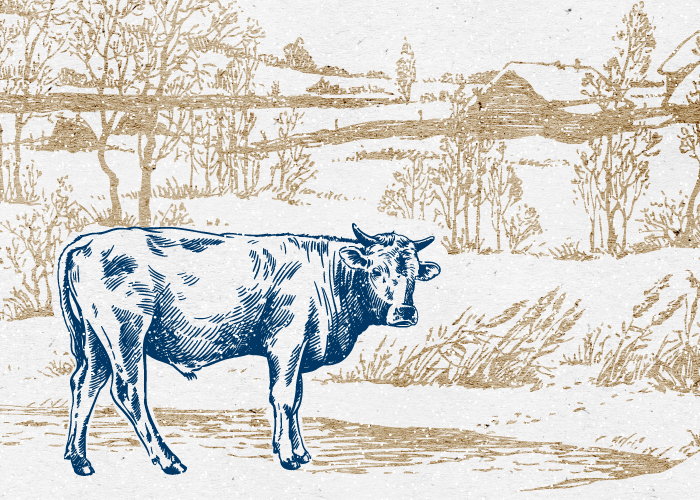
In 2013, an October blizzard took South Dakota by surprise and with its snow and ice came major cattle loss. Winter is coming and with it extreme weather conditions. While ice, sleet, and snow may bring a welcome Snow Day for many Americans, for farmers and agriculture workers, it can mean a very bad day. There are many things you can do for your livestock to both prepare and protect them during whatever winter has in store. Here are our top 7 tips for keeping your livestock safe during winter weather:
Keep them covered.
Extreme temperatures can have effects on your livestock from hoof damage to frostbite to larger calf birth weights. Keeping your livestock sheltered is the best way to help protect them from harsh weather and freezing temperatures.
Is your sheltered area too small to cover all of your livestock? We suggest a scheduled rotation so that each animal has some respite from severe weather. Windbreaks can also be used if an indoor shelter is not available. A row of trees, a fence, a hedge, or a screen can all be used effectively to give your livestock a place to find shelter from strong and biting winter wind
Have extra feed ready.
When the temperatures drop, appetites rise. In order to keep their body temperature regulated in low temperatures, your livestock will need to eat more. Cattle, horses, and hogs have been known to eat twice the amount of their normal feed in cold temperatures because they’re burning more calories in order to keep themselves warm. Because of this, it’s often a good idea to provide them with nutritional supplements to ensure that they’re getting everything they need to stay healthy.
Semalex (an acidifier) and Fixar (a mycotoxin binder) are two nutritional supplements that can cover ruminants, poultry, swine, feed, grain, deer, aquacultures, and pets. Anti-stress agents like Pollstress can help keep your poultry flocks safe.
Cover concrete with gravel or wood chips.
Hooved animals aren’t graceful on the ice and can develop foot problems from walking or slipping on concrete floors. Having an alternative cover for your concrete and outdoor pens can help prevent injury and keep your livestock safe. Hoof cracks and chips, and bruising can all be caused by wet and icy ground.
To help prevent this type of injury, coverings like gravel, wood chips, and sand have been recommended as alternatives to concrete by the Farm Bureau.
Keep ears and noses warm.
Frostbite in livestock often occurs first in the ears and the nose–two areas with the most exposure to the cold weather. If you cannot shelter your animals, or need to rotate shelter due to space constraints, be sure to help dry damp or wet parts of their body because moisture can quickly cause frostbite.
Baby the babies.
Lambs, calves, and foals are especially vulnerable to cold temperatures so be aware of the wind chill factors and ensure your livestock’s young have a safe, warm place to take shelter. If shelter is limited, be sure to protect the youngest and most vulnerable animals first. If no official shelter is available, providing simple windbreaks to help keep the young out of the harsh, biting wind can mean the difference between life and death.
Have a plan for deep snow.
When extreme weather is on the way, it may be a good idea to move herds off of the high ground to help them stay more easily accessible during deep snow and harsh weather. Making sure your livestock is nearby means you can reach them, feed them, and protect them even in deep snow and ice.
If for some reason there is an issue reaching your livestock, having winter provisions of straw, water, and silage in various places may help you get supplies to stranded herds or animals unable to come inside for shelter.
Be proactive.
Preparing for winter before winter weather is on the radar means you (and your flock) are ready for whatever comes next. Form a plan, create shelter, and make sheltering rotation schedules so that everyone knows what to do and when to do it when (and if) the time comes.
No matter what the winter has in store for you, being prepared can mean the difference between life and death for your livestock. Make sure you take precautions now so that you’re prepared, no matter what the winter weather brings.[/vc_column_text][/vc_column][/vc_row]

